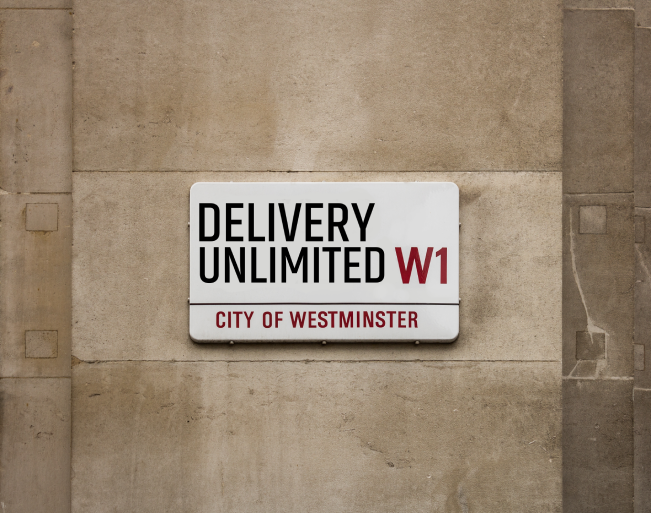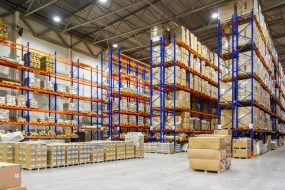

Environmental regulations resultant of environmental concerns are fast becoming the epicentre of focus within logistics and transport. It is estimated that multinational supply chains are accountable for 20% of carbon emissions globally. That’s where PUDO, the pick-up and drop-off delivery service, has come in to make logistics greener and solve other retail problems.
A growing trend in last mile deliveries is forgetting doorstep deliveries and sending shipments to central points instead, known around the block as pick-up, drop-off (PUDO).
Though primarily staged to meet customer demand and improve experience whilst reducing missed deliveries, one of the bi-products of PUDO services is its positive, sustainable impact on the environment.
Multinational supply chains are accountable for 20% of carbon emissions globally.
The delivery phenomenon
PUDO isn’t exactly a new concept, more a craze amplified as a result of changing consumer behaviour during the Covid-19 pandemic. As restrictions were placed on people’s freedom worldwide, e-commerce stepped up to serve growingly hungry consumers. It did so with exceptional reliance and speed; despite global economies buckling under trade limitations, customer expectations of receiving products almost instantaneously still managed to be met. The novelty of delivering packages within the standard timeframe of three to five days was fast replaced by a new phenomenon: next-day, or even same-day.
However, despite the obvious benefits of fast delivery (namely heightened brand-customer relationships and repeat custom), there are various downfalls, too. Quite simply, more demand means more vehicles, aeroplanes and ships required to transport products. And regardless of efforts to shift the transport sector away from damaging emissions, namely through electrification and manufacturing development, having millions of lorries or hundreds of planes circulating worldwide at any one time to meet those strict delivery timeframes will struggle to counteract polluting activities.
Related article: 5 Ways to Improve Customer Experience with Real-Time Data
Guaranteed parcel delivery


In swoops PUDO to save the day or at least maintain consumer expectations whilst providing some form of environmental damage limitation. Though we live in a world where it’s becoming normal to be able to access almost anything on demand, it’s important to bear in mind that we’re still living lifestyles that aren’t necessarily accommodating of this. For instance, placing an online order and choosing the ‘next-day delivery’ option despite being out the next day. Deliveries are missed, and customers are unsatisfied. In fact, according to research by Loqate, 24% of e-commerce businesses recognise that more than 1 in 10 orders aren’t delivered on first attempt, costing $17.20 on average per order.
24% of e-commerce businesses recognise that 1 in 10 orders are not delivered on the first attempt, costing $17.20 on average per order.
Yet when you can order online and select a delivery method whereby the last-mile is guaranteed, the risk of a missed delivery is almost omitted and customers are content. Collecting an order from a hub, be it a big store or a smaller shop, is becoming increasingly easier, highly accessible, and ever-popular. Central stores tend to be open at times convenient to the customer; before or after work, at weekends, sometimes even on national holidays. When the logistics of the last mile are given due consideration, the most diverse and appealing range of delivery options are presented to the customer.
Related article: E-commerce Start-ups are Now Shaping the Future of Logistics
Empowering greener practices
It goes without saying that when consumers have choice and flexibility, they feel empowered. In the same way, when retailers can move products from the first to the last mile with delivery virtually guaranteed, they can reap the rewards, too. Opportunity to truly optimise the time and cost of operations increases as greener practices are simultaneously put in place.
For example, using warehouses and storage facilities across numerous locations helps to reduce the distance between stock and its final destination. Especially when transporters need only unload 50 packages at one place (like a shop) rather than at 50 individual locations. The distance delivery couriers need to travel is lessened; couple this with electric vehicles you begin to paint a very real picture of greener – and potentially net-zero – distribution networks.
Related article: Logistics of a Net-zero Transport Sector
Let’s not forget how consumers play their part, too. Locations of collection points tend to be in heavily populated areas, spread far and wide across cities and towns and now gravitating towards smaller villages. Their exceptionally available state often promotes greener collection behaviours, like walking, cycling, or diverting an existing journey to pick up a package. The entire loop of PUDO services combined offers us a rare opportunity to really ramp up the adoption of smarter, more environmentally friendly logistics. And we’re excited to be starting our journey on it.




